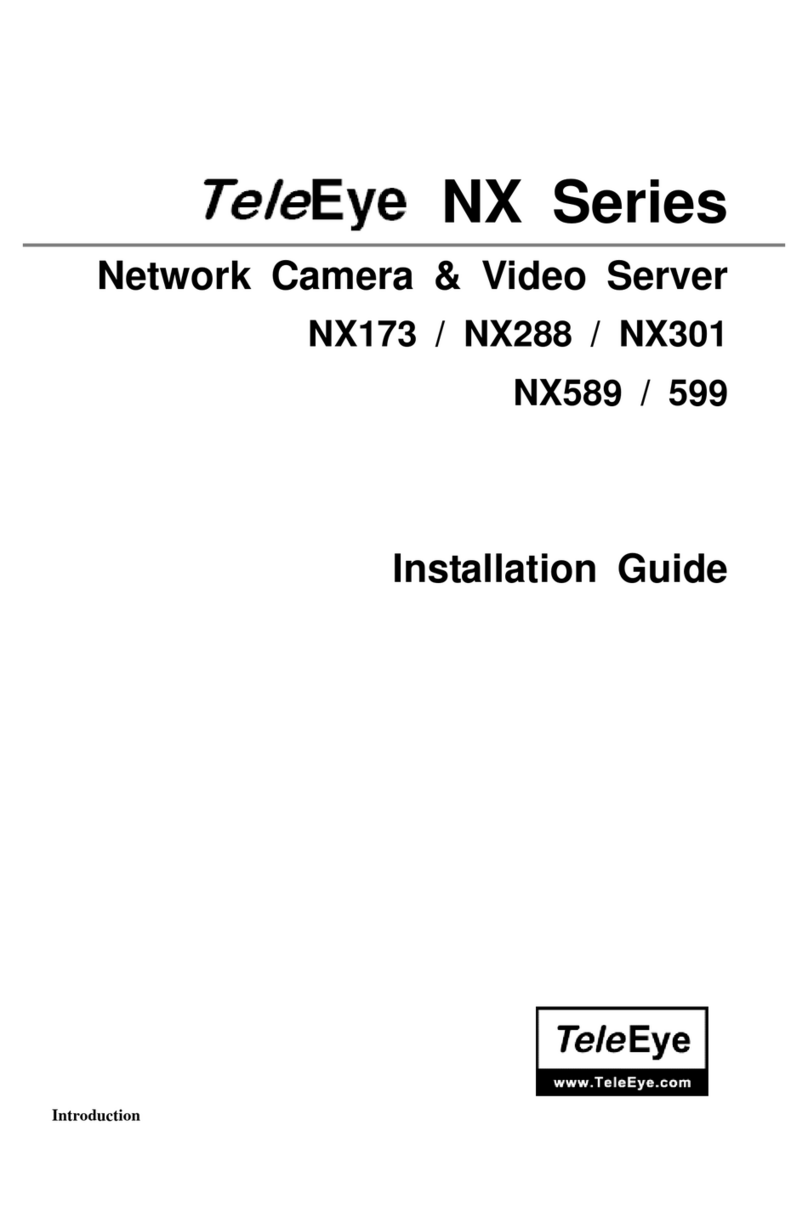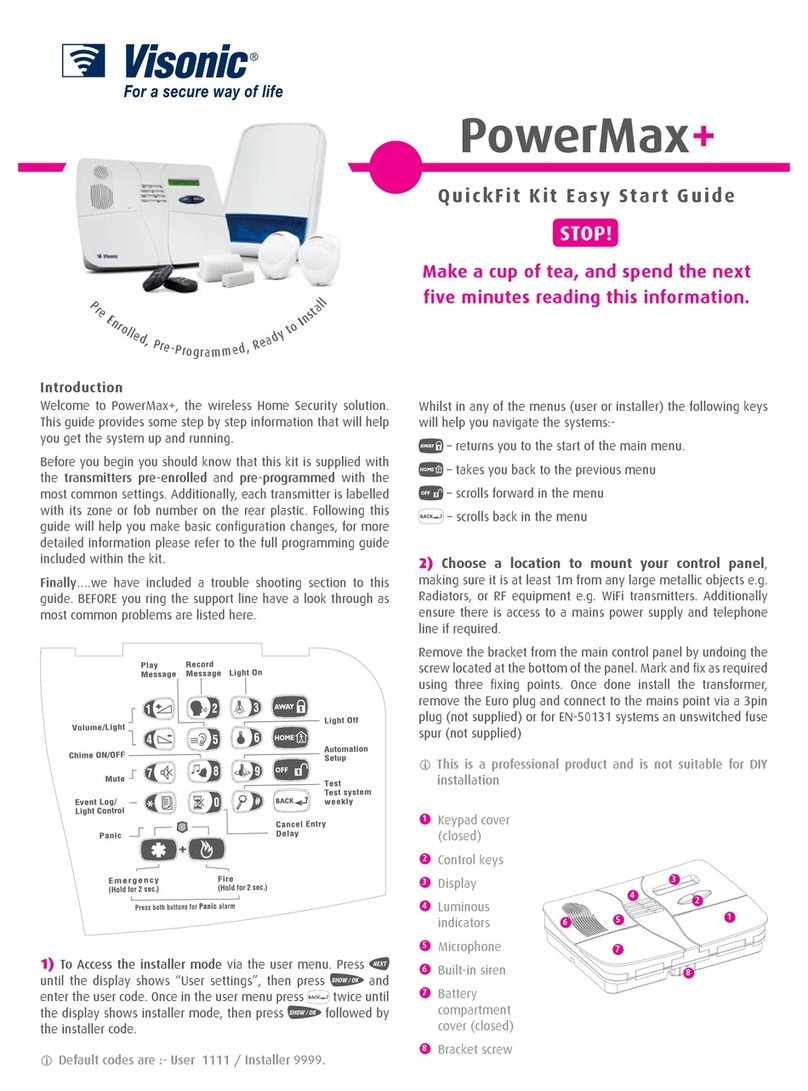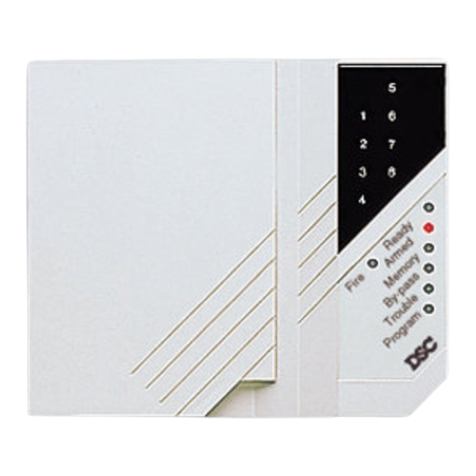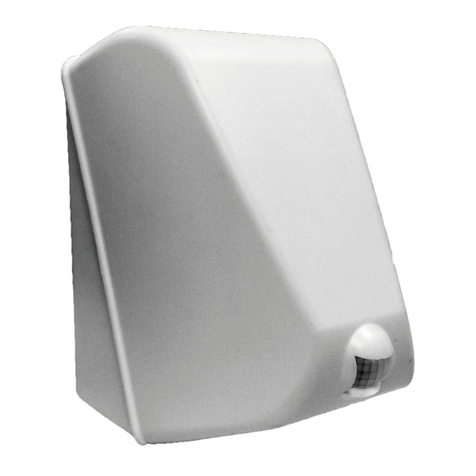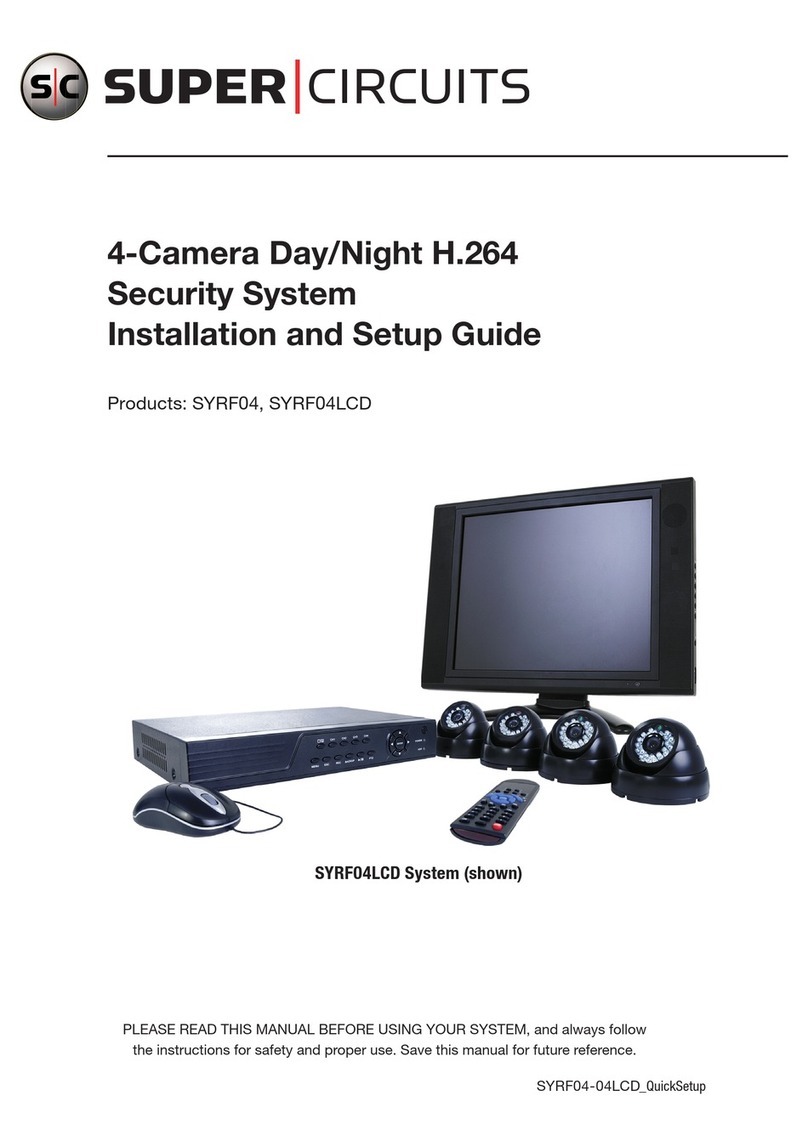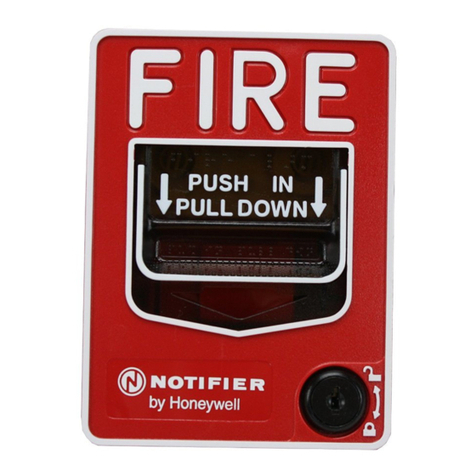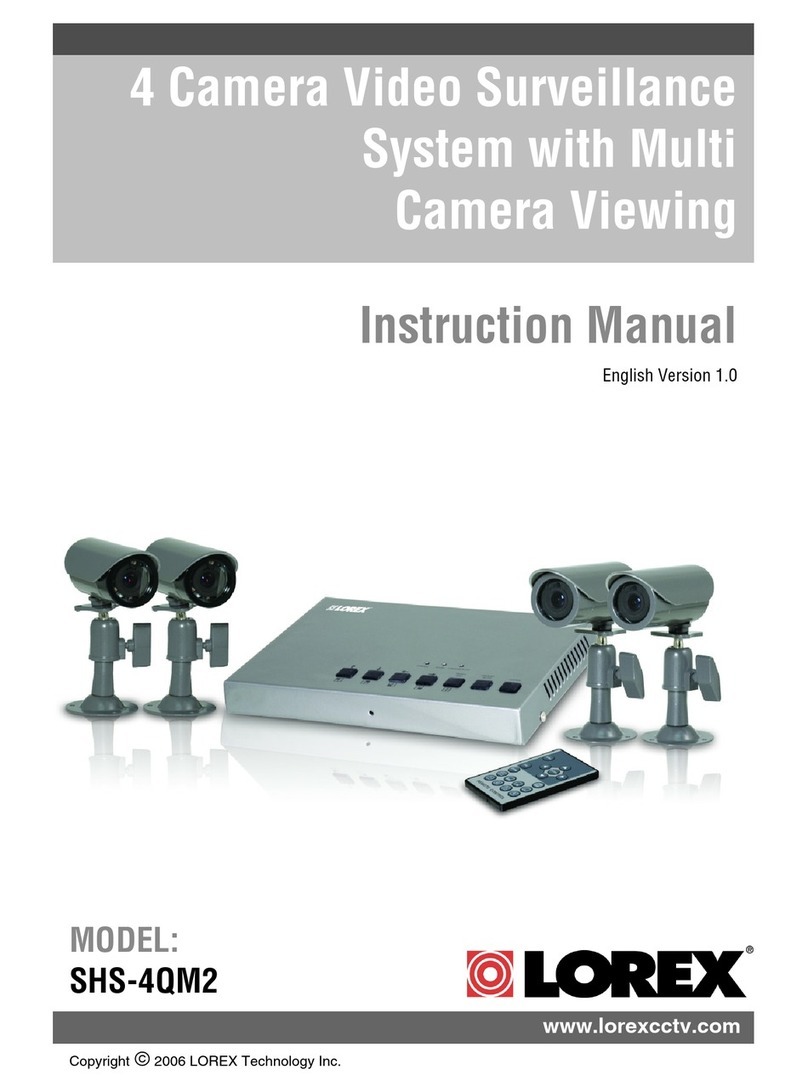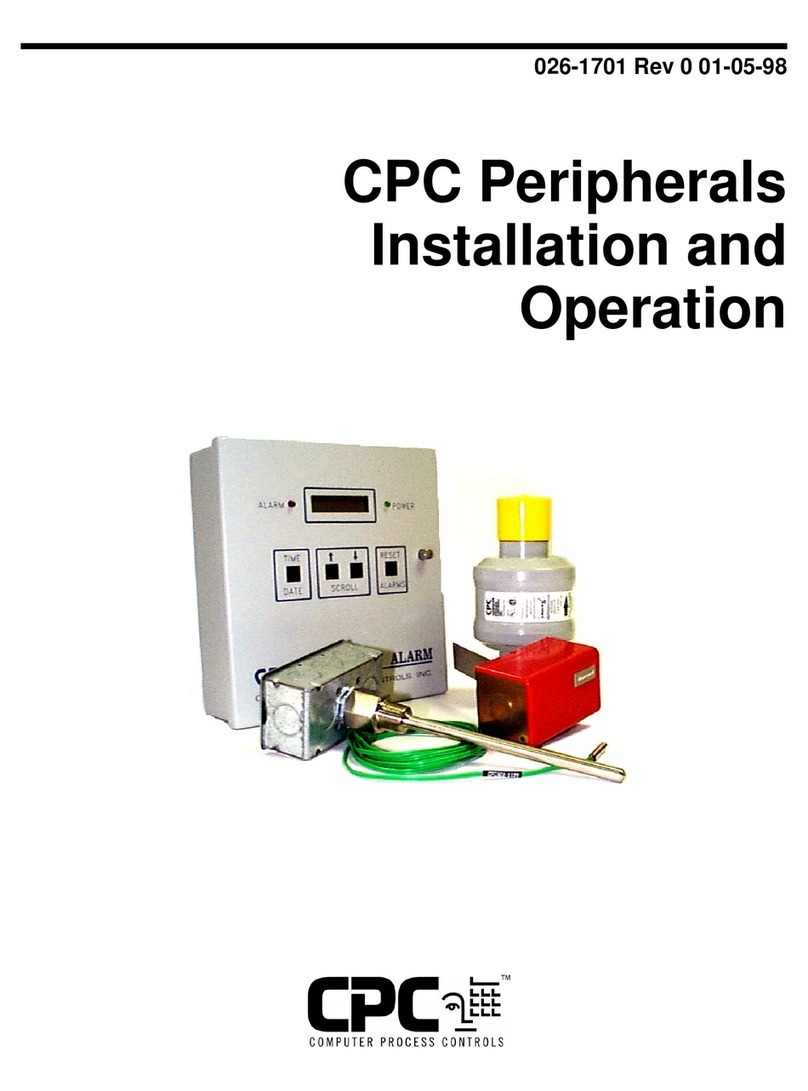Exigent Sensors EX20 CO User manual

1
• Electro-Chemical Carbon Monoxide Gas Sensing
• Designed to Last Up to 10 Years
• Rate of Rise Temperature Sensing
• Fixed Temperature Sensing
• Proprietary Wireless Connectivity
MADE IN THE USA
Models: EX20 CO
EX20C CO
10 Year Carbon Monoxide
Alarm
User’s Manual
Exigent CO Manual 102913.indd 1 10/29/2013 7:44:46 PM

23
What Makes the Exigent CO Alarm Different?
About Your New Carbon Monoxide Alarm
Thank you for purchasing the Exigent carbon monoxide alarm. CO alarms play
an important role in protecting your family and home from the dangers of
carbon monoxide gas. Please carefully read and follow the information in this
booklet to ensure that your alarm operates properly and is located in the areas
best suited for activation.
Illuminated status icons
for Power, Warning,
Wireless, and Fire
Two modes of electronic
temperature sensing for a
very fast response
Dual functioning test
and silence button
The latest electro-
chemical CO sensor Attractive and durable
materials for a sturdy,
high-quality alarm
General Information About Your Carbon Monoxide Alarm ......................... page 3
Contents of your Kit ................................................................................... page 4
General Warnings about Carbon Monoxide Gas...........................................page 5
Understanding the Dangers of CO Gas Poisoning.........................................page 6
Recommended Locations for Your CO alarm ............................................... page 7
Areas Not Appropriate for CO alarms ......................................................... page 8
Complete Home Fire Protection .................................................................. page 9
Acceptable Wireless Network Alarm Spacing .............................................. page 9
Alarm Features and Functions .............................................................. page 10-11
Deactivating Your CO Alarm ..............................................................page 12
Creating Your Wireless Network ............................................................... page 13
Adding an Alarm to Your Wireless Network .............................................. page 14
Removing a CO Alarm from Your Wireless Network .................................. page 15
Choosing the Mounting Location in a Room ............................................ page 16
How to Mount the CO Alarm ..................................................... page 17-18
Alarm Specifications ................................................................................. page 19
Important Fire Safety Information ............................................................ page 20
Warning! Limitations on CO alarms .......................................................... page 21
Limited Warranty ...................................................................................... page 22
Replacement Guarantees .......................................................................... page 23
Exigent Sensors recommends a combination of early-detecting Smoke and
CO alarms as well as reliable Heat alarms installed in their appropriate
locations throughout the home.
Smoke, CO and Heat alarms are not a substitute for an adequate homeowner’s
fire/property insurance policy.
Table of Contents
Sealed lithium battery
ATTENTION - This manual should be read, followed and retained for future
reference.
Frequency hopping
for superior wireless
communication
Exigent CO Manual 102913.indd 2-3 10/29/2013 7:44:52 PM

45
Contents of Your Kit
Please make sure the following is included in your kit:
CO Alarm
Instruction
Manual
Mounting Bracket
Key Features
• The latest electro-chemical CO sensing technology.
• Electronic temperature sensing with Rate of Rise and Fixed Temperature triggers.
• Fast response to CO gas exposure.
• Wireless communication to connect all Exigent alarms into their own unique
home network.
• Powered by a sealed lithium battery.
• Four illuminated icons to easily demonstrate the alarm’s status.
• Multi-function button to allow for testing and silencing of unwanted triggering.
• Uniquely loud horn to notify occupants of CO gas and fire danger.
• Top quality construction to ensure beautiful appearance and durability.
Plastic Anchors (2)
1” Screws (2)
Activation of your CO alarm indicates the presence
of carbon monoxide gas (CO) which can KILL YOU.
General Warnings About Carbon Monoxide Gas
WARNING
If your CO alarm signal sounds with the 4-beep pattern:
This carbon monoxide alarm is designed to detect carbon monoxide gas
from ANY source of combustion. It is NOT designed to detect smoke, or any
other gas types. The alarm also is equipped with Supplemental Temperature
Sensing. This will activate the alarm if the temperature reaches either 135°F
or the temperature rises by more than 20°F in a minute or less.
The CO alarm becomes susceptible to nuisance alarms when subject to
prolonged exposure to certain cleaning supplies, hairsprays and perfume
products. Care should be taken to install the CO alarm in spaces that are
well ventilated where these types of items are stored or used.
Self Adhesive
Labels (2)
1. Press and release the Silence Button.
2. Call your emergency services ( ) ____ - ______, fire department
or 911.
3. Immediately move to fresh air - outdoors or by an open door or
window.
Do a head count to check that all persons are accounted for.
Do not re-enter the premises nor move away from the open
door/window until the emergency services responders have
arrived, the premises have been aired out, and your alarm
remains in its normal condition.
4. After following steps 1-3, if your alarm reactivates within a 24
hour period, repeat steps 1-3 and call a qualified appliance
technician ( ) ____ - ______ to investigate for sources of CO
from fuel burning equipment and appliances, and inspect
for proper operation of this equipment. If problems are
identified during this inspection have the equipment serviced
immediately. Note any combustion equipment not inspected
by the technician and consult the manufacturers’ instructions,
or contact the manufacturers directly for more information
about CO safety and this equipment. Make sure that motor
vehicles are not, and have not been, operating in an attached
garage or adjacent to the residence.
•
•
Exigent CO Manual 102913.indd 4-5 10/29/2013 7:44:54 PM

67
3. Extreme Exposure: Unconsciousness, convulsions, cardiorespiratory failure,
death.
The following symptoms are related to Carbon Monoxide Poisoning and need to
be discussed with ALL members of the household:
1. Mild Exposure: Slight headache, nausea, vomiting, fatigue (often described
as “flu-like” symptoms).
Understanding the Dangers of CO Gas Poisoning
Many cases of reported CARBON MONOXIDE POISONING indicate that while
victims are aware they are not well, they become so disoriented they are unable
to save themselves by either exiting the building or calling for assistance. Young
children and household pets are typically the first affected.
Note: Applicable building codes or other local laws
may require the installation of CO and fire alarms
in addition to the minimum recommended by this
manual.
2. Medium Exposure: Severe throbbing headache, drowsiness, confusion, fast
heart rate.
Potential Problem Sources of CO Gas Inside the Home
The sources of Carbon Monoxide gas can be very difficult to locate due to the
odorless, colorless nature of the gas, especially after the home has been aired-out
prior to the investigators arrival. Look closely at the following:
1. Excessive spillage or reverse venting of fuel burning appliances:
• Outdoor conditions such as wind direction and/or velocity,
including high gusts of wind; heavy air in the vent pipes (cold/
humid air with extended periods between cycles).
• Negative pressure differential resulting from the use of exhaust
fans.
• Simultaneous operation of several fuel burning appliances
competing for limited internal air.
• Vent pipe connection vibrating loose from clothes dryers,
furnaces, or water heaters.
• Obstructions in, or unconventional vent pipe designs which
amplify the above situations.
2. Extended operation of unvented fuel burning devices (range/oven, fireplace)
3. Temperature inversions which can trap exhaust gasses near the ground.
4. Car idling in an open or closed attached garage, or near a home.
5. Poorly designed or maintained chimneys and/or vents.
Bedrooms. A major threat from poisonous
CO gas occurs at night when people are
sleeping. For added protection, CO alarms
can be installed in all sleeping rooms.
Living Spaces. To enhance safety, a CO alarm
can be located in the living spaces of a home.
Recommended Locations for your CO alarm
Recreation and Dining Rooms. For
additional protection, a CO alarm can be
located in the other living spaces of the
home.
Hallways. A CO alarm is required to be
centrally located outside of each sleeping
area, and on every level of the home.
If your hallway is longer than 40 feet, install a
CO alarm at both ends.
Basements. A CO alarm should be located
on every level of the house, including the
basement.
Exigent CO Manual 102913.indd 6-7 10/29/2013 7:44:54 PM

89
Areas Not Appropriate for CO alarms
Kitchens. Do not install within 5 feet
(1.5m) of kitchen appliances. The by-
products of cooking food can effect the
performance of the CO alarm.
Garages. Do not install in garages.
Exhaust gases from idling vehicles in an
open or closed garage can trigger the CO
alarm.
Attics. Do not install in attics. A CO
alarm can be affected by dust, small
insects or high and low temperatures.
Do not install the alarm in areas where
the normal ambient temperature can go
below 40°F (5°C) or exceed 100°F (38°C)
Utility and Furnace Rooms. Do not
install close to equipment that can create
steam and gas. Steam and exhaust gases
can affect performance of CO alarms. CO
alarms should be at least 20 feet (6m)
from sources of combustion.
S
H
CO
H
H
H
H
H
H
SS
SS S
SSS
S
CO
CO
CO
CO
CO
Complete Home Fire and Gas Protection
Single Story Homes Two Story Homes
Key
Minimum Required Smoke Alarms
Minimum Required CO Alarms
Recommended Heat Alarms
Required Interconnections
Attic
Kitchen Living Room Bedroom Hall Bedroom
Crawl Space
Attic
Bedroom BedroomHall
Living Room Kitchen
Utility Room
Basement
Acceptable Wireless Network Alarm Spacing
Each alarm will also act as a repeating
station, so any signal received by an alarm
will be rebroadcast.
After final installation, test all alarms
for proper wireless inter-connection.
Simply press and release the test
button of an alarm while having a
helper observe the remote alarms.
Maximum
Spacing in
Open Area
200’ (70m)
Exigent Sensors recommends complete home fire protection. This can
be achieved by installing a combination of smoke, CO and heat alarms in
their appropriate locations in every room of the house.
The Exigent proprietary wireless network
communicates using radio frequencies
905.2MHz - 913.2MHz. The range of the radio
has been tested to 200 feet (70m) in open area
distance testing.
Exigent CO Manual 102913.indd 8-9 10/29/2013 7:44:54 PM

10 11
CO Alarm Features and Functions
Power Indicator Light (Green)
On the CO Alarm, the POWER icon will briefly flash
once every 30 seconds when the alarm has been
activated.
WIRELESS will flash once per second to indicate the radio
network is open to accept additional alarms into the
network.
Wireless Networking Light (Blue)
Warning Light (Red)
WARNING will flash rapidly when a CO alarm detects
sufficient levels of CO gas. This will be accompanied
by the 4-beep sounding of the horn.
FIRE will flash when the alarm detects sufficient
quantities of heat. This is accompanied by the sounding
of the horn.
FIRE will stay on continuously if the alarm was triggered
remotely by another alarm on the wireless network.
Fire Warning Light (Red) Silencing Nuisance Alarms
CO Alarm Features and Functions
Testing the CO Alarm
Every CO alarm should be tested at least weekly to
ensure proper operation.
To test the alarm, press and release the button on the
front face.
The alarm will sound with 4 beeps (2X) and the WARNING
light will flash red rapidly.
All four icons will strobe to indicate proper function.
The alarm will then send out a network test
command and all other alarms on the radio network
will perform the same internal test.
If the alarm fails the self-test, the horn will sound a
single long tone. If this occurs, replace the alarm.
The EX20 CO alarm is equipped with a silence feature that can silence the alarm.
If during normal operation the alarm is triggered,
and
all appropriate safety precautions are being
taken,
the alarm can be silenced for six minutes by
pressing the button on the front face of the unit.
The silence feature will also silence any alarms that
were triggered remotely. However, the initiating alarm
must be silenced directly.
If the quantity of CO gas is too great, the alarm
will silence only briefly, then resume.
The FIRE warning light can be triggered in two ways
on the CO alarm, either exposure to sufficient heat or
remotely by another alarm on the wireless network.
WIRELESS will cease to flash one minute after the last
alarm has been added to the network or immediately
after the button has been pressed.
WARNING will flash red every 30 seconds
accompanied by the horn chirp, for a minimum of 7
days, to indicate Low Battery. Replace the alarm.
FIRE will continue to flash twice per minute (without the
horn) for three days after exiting an alarm condition, or
until the front button has been pressed and released.
WARNING will double flash red every 30 seconds
accompanied by the horn chirp, to indicate that
the alarm’s CO sensor has reached its End-of-Life.
Replace the alarm.
End-of-Life Feature
The CO Alarm has been designed to last for a period
of up to ten years. When the alarm has reached the
end of its useful life, the End of Life Signal will occur.
Note: Certain conditions such as a high ambient
temperature or a very dry environment can reduce the
life of the CO alarm to less than ten years.
When the End-of-Life Signal occurs, follow the
deactivation procedure on Page 12, and
replace alarm.
Exigent CO Manual 102913.indd 10-11 10/29/2013 7:44:54 PM

12 13
Creating Your Wireless Network
The Exigent CO Alarm communicates on its own private home network. This
network is created simply by powering up new alarms one at a time.
General Note: The wireless network is limited
to 18 total units. Only 12 of these units may be
smoke alarms, the remaining units can be CO and
heat alarms
Activate your next alarm by moving its slide
switch as shown above.
This alarm has been added to
your network!
One minute after activating the last alarm, the
WIRELESS light will stop flashing on the original
alarm, and it will join the network. The network
is now closed.
Continue activating each new alarm, one alarm
at a time, until all alarms have been added to the
network. This should include smoke and heat
alarms as well.
The blue WIRELESS light will flash briefly, then the
alarm will chirp twice and all four of the lighted
icons will strobe on in succession.
O
F
F
Deactivating the Exigent CO Alarm
When the alarm’s End-of-Life signal occurs, the alarm must be deactivated and
disposed of properly. Be sure and have a replacement alarm available.
To deactivate the alarm, insert a pin or bent
paperclip into the deactivation lock-out hole.
Hold the pin down firmly.
When the switch is fully positioned the word
“OFF” will be exposed.
With the pin still pressed firmly in place, slide the
switch in the direction indicated by the arrow in
the drawing.
If the alarm’s End-of-Life signal has begun,
remove the alarm from its bracket.
Locate the slide switch and the deactivation
lock-out hole.
slide
switch
lock-out hole
The switch will lock permanently into place. The
alarm cannot be reactivated!
After the deactivation switch has been thrown,
the WARNING light will turn on. This will
deplete any remaining battery power over a
period of a few hours.
After the light has gone out, responsibly
dispose of the alarm and replace with a
new CO alarm!
The blue WIRELESS light will begin to flash slowly.
While the blue WIRELESS light is flashing,
additional alarms may be added to your network.
Activate your first alarm by moving the slide
switch located on the back side of the alarm in
the direction indicated by the arrow.
General Note: It is easiest to first create the
wireless network while all alarms are located
together, such as on a table.
Note: This switch is connected to a lock-out
mechanism that will prevent installation on the
bracket until activated.
The slide switch will lock into place when fully
positioned.
Exigent CO Manual 102913.indd 12-13 10/29/2013 7:44:55 PM

14 15
Removing a CO Alarm from a Wireless Network
In the event that an alarm must be removed from your network, the alarm’s
network data must be erased from its memory.
Press and hold the button on the front cover
of the alarm. The red WARNING light will flash
rapidly and the alarm will sound four tones.
Continue holding the button down.
Next, the WARNING light will begin to flash
yellow. Count 10 flashes of the yellow
WARNING light and release the button.
The alarm will chirp twice and all four of the
lighted icons will strobe on.
All network data has been erased from
the alarm. It will now perform as a single
station alarm or it can be joined to a new
network.
Adding an Alarm to Your Wireless Network
To add an alarm(s) to your existing home network, perform the following steps.
Select any alarm on the existing network. Press
and hold the button on the front cover of the
alarm. The red WARNING light (FIRE if alarm is a
smoke alarm)will flash rapidly and the alarm will
sound three or four tones.
Next, the yellow WARNING light will flash slowly.
Count to 5 flashes of the yellow WARNING light
and release the button.
If done correctly, the blue WIRELESS light will now
slowly pulse, indicating the network is again ready
to receive additional alarms.
The alarm has been successfully added to
your network!
To add a new alarm, simply slide the switch
located on the back side of the new alarm in
the direction indicated by the white arrow. It
will lock into place when fully positioned.
The blue WIRELESS light will flash briefly, then the
alarm will chirp twice and all four of the lighted
icons will strobe on in succession.
Continue holding the button down.
If not, wait about 15 seconds and carefully repeat
these steps.
If the alarm being added was previously used,
follow the steps on Page 15 to erase its network
data. Then re-open this alarm’s wireless function
using steps 1-2 in this section.
Press the button on the original alarm and the
WIRELESS light will stop flashing, or after one
minute the WIRELESS light will stop flashing
automatically and the network will close.
Exigent CO Manual 102913.indd 14-15 10/29/2013 7:44:55 PM

16 17
Choosing the Mounting Location in a Room
BEST
Center on ceiling.
How to Mount the CO Alarm
1Mark
Place the mounting bracket against the
ceiling or wall, and using the mount-
ing bracket as a template, mark the
top and bottom holes with a pencil.
2Drill
Using a 1/8” (3mm) drill bit, drill
two pilot holes in the center of the
two marked hole locations. This will
determine if a wood beam or stud is
present.
3 Fasten Bracket
Situation A: Wood
If wood is present behind the drywall,
securely fasten the mounting bracket
to the wall using the two 1” screws.
1/8” (3mm) drill bit
Wood
Drywall
Mounting Bracket
1” Screws
Applying the Self-Adhesive Warning Labels
Add the telephone numbers of your emergency
service provider and that of a qualified technician
in spaces provided.
This CO alarm was shipped with two (2) self-
adhesive Warning Labels.
Place one label next to the alarm, and the other
label near a source of fresh air where your family
plans to gather if the alarm indicates the presence
of carbon monoxide gas.
WARNING WARNING
Cleaning Your Alarm
Over time, dust might collect within your alarm, potentially reducing its
performance. To clean the alarm perform the following:
Remove the alarm from its bracket.
Vacuum all the external surfaces carefully. Wipe
with a clean, dry cloth. Do not use cleaners or
solvents.
Do not submerge the CO alarm in water.
The sensitive electronics will be damaged!
Press and release the Test button on the front
face to verify the alarm is still functioning prop-
erly and reinstall on the wall/ceiling.
Note: Avoid placement of alarms close to ceiling
fans or heating/air conditioning vents.
ACCEPTABLE
On ceiling
ACCEPTABLE
On wall, at least 4” (10cm) from ceiling, and at
least 3 feet (0.9m) from the floor.
Minimum 3’
from floor
Exigent CO Manual 102913.indd 16-17 10/29/2013 7:44:55 PM

18 19
How to Mount the CO Alarm
Drywall
Plastic Anchors
Mounting Bracket
1” Screws
Situation B: No Wood
If no wood is present, use a Phillips
screwdriver to screw the two plastic
wall anchors into the pre-drilled holes
until fully seated. Then secure the
mounting bracket to the wall anchors
using the two 1” screws.
Situation C: Combination
Where there is no wood present, first
screw the plastic wall anchor into
the pre-drilled hole using a Phillips
screwdriver.
Then secure the mounting bracket in
place using the two 1” screws.
Drywall
Plastic Anchors
Mounting Bracket
1” Screws
Wood
4Lock Into Place
With the alarm activated and the alarms
fully networked together, position the
CO alarm onto the center of the bracket
and turn clockwise. The alarm will lock
into place.
Alarm Specifications (EX20 CO/EX20C CO)
Operating Voltage 3VDC
Battery Type Non-replaceable Lithium-Manganese
Sensitivity 70 PPM: 60 to 80 minutes
150 PPM: 10 to 15 minutes
400 PPM: 4 to 8 minutes
30 PPM or less: alarm will not activate
Alarm Life Up to 10 Years
Operating Ambient Temperature 40°F - 100°F
Operating Humidity 10 - 95% Non-condensing
Alarm Dimensions 5.1” x 5.1” x 1.75”
Weight 0.86 lbs
Heat Sensing
Fixed Temperature 135ºF
Rate of Rise 20ºF / minute, > 100ºF
Listings c UL us; CSFM
FCC Compliance Statement and IC Notice:
This device complies with part 15 of the FCC Rules. This device complies with Industry
Canada licence-exempt RSS standard(s). Operation is subject to the following
two conditions: (1) This device may not cause harmful interference, and (2) this
device must accept any interference received, including interference that may cause
undesired operation.
This equipment has been tested and found to comply with the limits for a Class
B digital device, pursuant to part 15 of the FCC Rules. These limits are designed
to provide reasonable protection against harmful interference in a residential
installation. This equipment generates, uses and can radiate radio frequency energy
and, if not installed and used in accordance with the instructions, may cause
harmful interference to radio communications. However, there is no guarantee that
interference will not occur in a particular installation. If this equipment does cause
harmful interference to radio or television reception, which can be determined by
turning this equipment off and on, the user is encouraged to try to correct the
interference by one or more of the following measures:
(1) Reorient or relocate the units. (2) Increase the separation between the equipment
and receiver. (3) Connect the equipment into a different circuit from that to which the
receiver is connected. (4) Consult the dealer or an experienced technician for help.
FCC Caution and IC Caution: Any Changes or modifications not expressly approved by
the manufacturer could void the user’s authority to operate the equipment.
Les changements ou modifications non approuvés expressément par la partie
responsable de la conformité pourrait annuler l’autorité de l’utilisateur à faire
fonctionner l’équipement.
Le présent appareil est conforme aux CNR d’Industrie Canada applicables aux
appareils radio exempts de licence. L’exploitation est autorisée aux deux conditions
suivantes : (1) l’appareil ne doit pas produire de brouillage, et (2) l’utilisateur de
l’appareil doit accepter tout brouillage radioélectrique subi, même si le brouillage est
susceptible d’en compromettre le fonctionnement.
Exigent CO Manual 102913.indd 18-19 10/29/2013 7:44:56 PM

20 21
Important Fire and Emergency Safety Information
Be prepared for fire emergencies:
Plan Your Escape
• Draw a floor plan of your home.
• Show two ways out of each room.
• Discuss escape routes with everyone in your home.
• Agree on an outside meeting place where you will gather after escaping.
Be Prepared
• Familiarize every member of the household with the sound of the smoke, CO
and heat alarms.
• Have everyone in the home memorize the fire department’s emergency
phone number.
• Instruct each person to call the emergency number from a neighbor’s
phone or a mobile phone used outside the home.
• Teach everyone to unlock and open all windows, and release security bars.
• Make sure security bars are equipped with quick-release devices.
• Keep exits clear and free from furniture and clutter.
Practice!
• Hold home fire and emergency drills at least twice a year.
Get Out and Stay Out
• Once you have escaped from a fire, do not go back inside for any reason.
• Make fire drills realistic by pretending some escape paths are blocked by
smoke or fire.
If you live in an apartment building
• Learn and practice your building’s evacuation plan.
• If you hear a fire or CO alarm, react immediately.
• Know the location of all building exits and fire alarm boxes.
• Use the stairs ... never use an elevator during a fire.
• If exits are locked or blocked, report the problem to your building’s
management.
Escape Tips
• Close doors behind you as you escape to slow the spread of fire and smoke.
• If you have to escape through smoke, crawl on your hands and knees, keeping
your head one to two feet above the floor, where the air will be clearest.
• Test the doorknob and spaces around the door with the back of your hand. If
the door is warm, try another escape route. If the door is cool, open it slowly.
Close it quickly if smoke pours through.
WARNING! Limitations of CO alarms
Wireless CO alarms have been proven to be both effective and reliable, but
they may not be effective under all conditions. No alarm design can offer total
protection of life and property. A CO alarm is not a substitute for an adequate
homeowner’s property insurance or life insurance policy.
WARNING - This product is intended for use in ordinary indoor locations of family
living units. It is not designed to measure compliance with Occupational Safety
and Health Administration (OSHA) commercial or industrial standards.
CO alarms will not work without a source of power. The alarm will not operate
and the alarm will not sound if the battery has died or the alarm has been
deactivated.
CAUTION - This alarm will only indicate the presence of carbon monoxide gas at
the sensor. Carbon monoxide gas may be present in other areas of the home.
Radio communication between alarm units may fail to take place if significant
changes to the home have occurred since installation and testing. Moving
large objects such as a refrigerator or metal cabinet could impede alarm radio
performance.
Alarm warning signals may not be heard. A deep sleeper, hearing-impaired
person, young child or someone impaired by drugs or alcohol may not awaken
in response to an alarm activation. This can occur even when an alarm is located
inside the individual’s bedroom. Be sure emergency exit drills are practiced that
take this possibility into account.
CO alarms may not always activate and provide early enough warning. A CO
alarm will only activate when it is maintained in working order and sufficient
amounts of CO gas reaches the unit.
Individuals with medical problems may consider using warning devices which
provide audible and visual signals for carbon monoxide concentrations under
30ppm.
This device is designed to protect individuals from the acute effects of carbon
monoxide exposure. It will not fully safeguard individuals with specific medical
conditions. If in doubt consult a medical practitioner.
WARNING - The installation of CO alarms should not be used as a substitute for
proper installation, use, and maintenance of fuel-burning appliances, including
appropriate ventilation and exhaust systems.
CO ALARMS CANNOT GUARANTEE THAT YOU WILL NEVER SUFFER ANY ILLNESS
OR INJURY FROM EXPOSURE TO CARBON MONOXIDE GAS.
Exigent CO Manual 102913.indd 20-21 10/29/2013 7:44:56 PM

22 23
Limited Warranty
The CO alarm manufacturer guarantees to replace at no cost to the
original owner any CO alarm that has been materially damaged or destroyed
by an accidental fire. To obtain a replacement alarm under this Lifetime Fire
Replacement Guarantee, you must return the damaged or destroyed CO alarm
to the manufacturer within 90 days of the fire, accompanied by a complete
activation report and verification report from the applicable fire department.
To obtain a replacement under this guarantee, contact the manufacturer at
Exigent Sensors LLC, 11331 Markon Drive, Garden Grove, CA 92841 to receive
information as to the address to which you should send your damaged or
destroyed Exigent CO alarm and accompanying information.
Lifetime Fire Replacement Guarantee
After the Limited Warranty has expired, commencing on the first day
of the 25th month and extending through the lifetime of customer, the
manufacturer of the Exigent Carbon Monoxide Alarm guarantees to repair or
replace the CO alarm at a preferred owner discounted price which includes
shipping and handling and is adjusted annually. This Product Replacement
Guarantee does not create any obligations or liabilities on the part of Exigent
Sensors LLC.
This guarantee is extended only to the original purchaser and is available
when the smoke alarm is sent to the manufacturer, with a description of any
problem and proof-of-purchase. This replacement guarantee will not apply if
the manufacturer’s inspection reveals that the damage or failure is a result of
abuse, misuse, improper maintenance, abnormal usage, or work performed by
unauthorized service personnel. At least an annual cleaning (according to the
directions supplied in this owner’s manual or set forth at www.crossfirealarms.
com) is recommended to prolong the useful life of your Exigent CO Alarm.
To obtain a replacement under this guarantee, contact the manufacturer
at www.crossfirealarms.com or at (714) 895-8477, to receive information
regarding current pricing and for the address to which you should send your
Exigent CO Alarm along with payment for your replacement alarm. Be sure
to enclose your return address and daytime telephone number. The Exigent
manufacturer will ship the new replacement unit to you upon receipt of all of
the foregoing materials and information.
This Product Replacement Policy does not alter or affect your Limited
Warranty.
Lifetime Product Replacement Guarantee
For a period of 24 months from the date of purchase, Exigent Sensors LLC
warrants to you, the original purchaser, that your Exigent CO Alarm will be
free from defects in workmanship, materials, and construction under normal
use and service. If a defect in workmanship, materials, or construction should
cause your Exigent CO Alarm to become inoperable within the warranty period,
Exigent Sensors LLC will repair your Exigent CO Alarm or furnish you with a new
or rebuilt replacement Exigent CO Alarm without charge to you except for your
costs of shipping the Exigent CO Alarm to Exigent Sensors LLC for warranty
coverage. Your repaired or replacement Exigent CO Alarm will be returned to
you without charge and will be covered under this warranty for the balance of
the warranty period.
This warranty will not apply if inspection of your Exigent CO Alarm shows
that the damage or failure was caused by abuse, misuse, abnormal usage, faulty
installation, improper maintenance, or work other than that performed by
authorized service personnel.
Any warranties implied under any State law, including implied warranties
of merchantability and fitness for a particular purpose, are limited in duration
to the period of this limited warranty. Some states do not allow limitations on
how long an implied warranty lasts, so the above limitation may not apply to
you. Neither the Exigent manufacturer nor Exigent Sensors LLC will be liable
for any loss, damage, incidental or consequential damages of any kind arising in
connection with the sale, use, operation, inoperability, malfunction, or repair of
your Exigent CO Alarm. Some states do not allow the exclusion or limitation of
incidental or consequential damages, so the above limitation or exclusion may
not apply to you.
If a defect in workmanship, materials, or construction should cause your
Exigent CO Alarm to become inoperable within the warranty period, to obtain
warranty coverage you must ship the Exigent CO Alarm to Exigent Sensors LLC,
with shipping costs prepaid by you. You must also pack the Exigent CO Alarm
to minimize the risk of it being damaged in transit. You must also enclose a
return address. Exigent CO Alarms returned for warranty service should be
sent to: Exigent Sensors LLC, 11331 Markon Drive, Garden Grove, CA 92841,
accompanied by proof of purchase.
If Exigent Sensors LLC receives a Exigent CO Alarm in a damaged condition as
the result of shipping, you will be notified and you may need to file a claim with
the shipper.
This Limited Warranty gives you specific legal rights, and you may also have
other rights which vary from state to state. This is your copy of the Limited
Warranty on your Exigent CO Alarm. Please retain it, along with proof of
purchase showing the date of purchase and the identity of the purchaser, in a
safe place.
Exigent CO Manual 102913.indd 22-23 10/29/2013 7:44:56 PM

24 25
Endroits Recommandés pour votre Alarme CO
Chambres à coucher. Pour plus de protection, les alarmes au CO peuvent
être installés dans toutes les chambres à coucher.
Salons. Pour améliorer la sécurité, un détecteur de CO doit être installé dans
le salon d’une maison.
Loisirs et Salles à Manger. Pour la protection supplémentaire, un
détecteur de CO peut être situé dans les autres espaces vitaux de la maison.
Couloirs. Un avertisseur de CO doit être situé à l’extérieur de chaque aire de
repos, et à chaque étage de la maison.
Sous-sols. Un détecteur de CO est nécessaire à tous les niveaux de la
maison, y compris le sous-sol près de l’escalier menant à l’étage au-dessus.
Les secteurs suivants sont exigés ou recommandés pour l’installation de
détecteur de CO.
Cuisines. N’installez pas près d’appareils de cuisine. Un avertisseur de CO
n’est pas être situé à moins de 5 pieds (1,5 m) de tout appareil de cuisson
Garages. Ne pas installer dans les garages.
Greniers. Ne pas installer dans les greniers.
Utilitaire et chambres de la fournaise. Ne pas installer à proximité de
l’équipement qui peut créer de la vapeur et de gaz.
Zones Non Appropriés aux Avertisseurs de CO
Espaces de haute température. Ne pas installer l’alarme dans les zones
où la température ambiante normale peut dépasser 38°C.
Caractéristiques et Fonctions d’Alarme
Power Lumière (Vert)
Sur le EX20C CO (batterie uniquement alimenté), POWER clignote brièvement toutes
les 30 secondes lorsque l’alarme a été activée.
RADIO clignote une fois par seconde pour indiquer la réseau est ouvert à accepter des
alarmes supplémentaires dans le réseau.
Radio Lumière (Bleu)
FIRE clignote lorsque l’alarme détecte des quantités suffisantes de chaleur. Ceci est
accompagné par le son de la corne.
FIRE restera allumée en permanence si l’alarme a été déclenchée à distance par une
autre alarme sur le réseau multiLINX.
Fire Lumière (Rouge)
RADIO cessera de clignoter une minute après que la dernière alarme a été ajouté au
réseau ou immédiatement après avoir pressé le bouton.
WARNING va doubler clignotement rouge toutes les 30 secondes, accompagnés
par le gazouillement de klaxon pour indiquer que le capteur de CO de l’alarme a
atteint sa fin de vie. Remplacer l’alarme.
Warning Lumière (Rouge)
WARNING clignote rapidement lorsqu’une alarme CO détecte suffisamment de
gaz CO. Cela sera accompagné par la 4-bip sonore de l’avertisseur sonore.
FIRE continuera à clignoter deux fois par minute (sans corne) pendant trois jours
après avoir quitté un état d’alarme, ou jusqu’à ce que le bouton de devant a été
enfoncée et relâchée.
Français Langue Annexe
WARNING clignote en rouge toutes les 30 secondes accompagné par le signal de
l’avertisseur sonore, pour un minimum de 7 jours, pour indiquer un niveau de
batterie faible. Remplacer l’alarme.
ATTENTION - Ce manuel doit être lu, suivi et conservés pour référence future.
L’activation de votre alarme CO indique la présence de monoxyde de carbone
(CO) qui peuvent vous tuer.
AVERTISSEMENT
Si votre signal d’alarme de CO sonne avec le modèle 4-bipz:
1) Ramener immédiatement à l’air frais - à l’extérieur ou par une fenêtre ou une
porte ouverte. Vérifiez que toutes les personnes sont prises en compte. Ne pas
re-entrer dans les lieux ou s’éloigner de la fenêtre/porte ouverte jusqu’à ce que
les intervenants des services d’urgence sont arrivés, les locaux ont été aérés et
votre alarme reste dans sa position normale
2) Appelez votre service d’urgence local (numéro de téléphone) (service des
incendies ou 911)
Si le signal de fin de vie ou de batterie faible se déclenche, Suivez les instructions
du manuel du propriétaire pour la désactivation et le remplacement de l’alarme.
Exigent CO Manual 102913.indd 24-25 10/29/2013 7:44:56 PM

26 27
Choisir l’Emplacement de Montage
MEILLEUR - Centre sur le plafond.
ACCEPTABLE - Sur le plafond
ACCEPTABLE - Sur le mur, au moins 4” (10 cm) du plafond, et au moins 3 pieds
( 0,9 m) du sol.
Remarque Evitez placement des alarmes à proximité de ventilateurs de plafond
ou de chauffage / air évents de climatisation.
Création de Vous Réseau Sans Fil
L’EX20C CO l’Alarme communique sur son propre réseau privé. Ce réseau est créé
simplement en branchant d’en haut nouvelles alarmes un à la fois.
Note: Le réseau multiLINX est limité à 18 unités totales. Seulement 12 de ces
unités peuvent être des détecteurs de fumée, les unités restantes peuvent être
des alarmes de CO et de la chaleur.
Alors que le voyant bleu RADIO clignote, alarmes supplémentaires peuvent être
ajoutés à votre réseau.
Activez votre prochaine alarme en déplaçant son interrupteur à glissière comme
indiqué ci-dessus.
Cette alarme a été ajouté à votre réseau!
Activer votre première alarme en déplaçant le sélecteur situé sur la face arrière de
l’alarme dans le sens indiqué par la flèche.
Une minute après l’activation de la dernière alarme, la lumière RADIO va arrêter
l’alarme d’origine clignotant, et il se joindra au réseau. Le réseau est maintenant
fermé.
Continuer à activer chaque nouvelle alarme, un détecteur à la fois, jusqu’à ce que
toutes les alarmes ont été ajoutés au réseau. Cela devrait inclure des alarmes de
fumée et de la chaleur aussi bien.
Le voyant bleu RADIO clignote brièvement, puis l’alarme émettra un son strident
deux fois et tous les quatre des icônes lumineuses seront stroboscopique sur
successivement.
Note: Cet interrupteur est relié à un mécanisme de verrouillage qui empêchera
l’installation sur le support jusqu’à ce qu’active.
L’interrupteur à glissière se verrouille en place lorsque parfaitement positionné.
La lumière bleu RADIO commence à clignoter lentement.
Désactivation de l’alarme
Quand le signal de la Fin-de-Vie de l’alarme se produit, l’alarme doit être dés-
activée et éliminés de façon appropriée. Soyez sûr et avoir un avertisseur de
remplacement.
Pour désamorcer l’alarme, insérez une épingle ou un trombone dans le trou de
lock-out. Maintenez l’épingle en place fermement.
Lorsque le commutateur est positionné parfaitement le mot “OFF” sera exposé.
Le commutateur se verrouillera définitivement en place. L’alarme ne peut pas être
réactivé!
Après l’interrupteur de désactivation a été jeté, icône d’avertissement s’allume.
Cela va épuiser toute la puissance restante de la batterie sur une période de
quelques heures.
Lorsque la lumière est sorti, jeter l’alarme et le remplacer par un nouveau dé-
tecteur de CO!
Avec la broche toujours appuyé fermement en place, faites glisser le commuta-
teur dans le sens indiqué par la flèche sur le dessin.
Si le signal de Fin-de-Vie de l’alarme a commencé, supprimer l’alarme de son
support.
Repérez l’interrupteur à glissière et le trou de lock-out à l’arrière de l’alarme.
Test de l’Alarme
Chaque alarme doit être vérifié chaque semaine pour assurer le bon fonctionnement.
Pour tester l’alarme, appuyez sur et relâchez le bouton sur la face avant.
L’alarme retentit avec 4 bips et WARNING se met à clignoter rapidement.
Tous les quatre icônes seront stroboscopique pour indiquer un test réussi.
L’alarme enverra alors une commande de test de réseau et toutes les autres
alarmes sur le réseau vont effectuer les étapes ci-dessus.
Si l’alarme échoue le test automatique, la corne se fait entendre un signal sonore
long. Dans ce cas, remplacer l’alarme.
Alarmes Compatibles - Chaleur et Fumée
Cet avertisseur de CO est compatible avec tous les autres Exigent EX20C CO
alarmes. Cela comprend les détecteurs de fumée et de chaleur.
Le monoxyde de carbone alarmante périphérique est conçu pour détecter le
monoxyde de carbone gaz provenant de toute source de combustion. Il n’est pas
conçu pour détecter la fumée, un incendie, ou de tout autre gaz.
Pour réduire le risque de déclenchement intempestif du circuit d’alarme de
l’appareil, qu’espaces d’installation doivent être bien aérés lors de l’entretien
ménager fournit ou contaminants similaires sont utilisés
L’appareil ne doit pas être installé dans des endroits où la température ambiante
normale est inférieure à 40°F (4.4°C) ou est supérieure à 100° F (37.8 °C), à moins
que l’appareil a été jugé acceptable pour l’installation à une plus grande ou plus
faible température ambiante.
Les symptômes suivants peuvent être liés à MONOXYDE DE CARBONE empoi-
sonnement et devraient être discutées avec tous les membres du ménage:
Exposition doux: maux de tête, écoulement nasal, irritation des yeux, souvent
décrit comme grippe-comme les symptômes;
L’exposition moyenne: étourdissements, somnolence, vomissements
Exposition extrême: inconscience, lésions cérébrales, mort.
Nombreux cas d’intoxication au monoxyde de carbone déclarées indiquent que
tandis que les victimes sont conscients qu’ils ne sont pas bien, ils deviennent
tellement désorientés, ils sont incapables de se sauver en sortant du bâtiment ou
appeler le service après-vente.
Informations Importantes à Propos de Gaz CO
La date de remplacement qui s’affiche sur le périphérique est la date au-delà de
laquelle le périphérique peut ne pas détecter le monoxyde de carbone avec préci-
sion et doit être remplacé immédiatement.
Exigent CO Manual 102913.indd 26-27 10/29/2013 7:44:56 PM

28 29
Ajout d’une Alarme à Votre Réseau sans Fil
Pour ajouter une alarme (s) à un réseau de existant, effectuez les étapes suiv-
antes.
Sélectionnez n’importe quelle alarme sur le réseau existant. Appuyez et main-
tenez le bouton de la couverture de l’alarme. La lumière WARNING rouge se met à
clignoter rapidement et l’alarme retentit 4 tons.
Ensuite, le voyant WARNING jaune clignote lentement. Compter jusqu’à 5
clignotements de la lumière WARNING jaune et relâchez le bouton.
Si fait correctement, la lumière RADIO bleue maintenant lentement
flashe, indiquant que le réseau est à nouveau prêt à recevoir des alarmes
supplémentaires.
L’alarme a été ajouté avec succès à votre réseau!
Pour ajouter une nouvelle alarme, faites simplement glisser l’interrupteur situé à
l’arrière de la nouvelle alarme dans la direction indiquée par la flèche blanche. Il
se verrouille en place lorsqu’il est complètement positionné.
La lumière RADIO bleue clignote brièvement, alors l’alarme gazouillera deux fois
et tous les quatre des icônes lumineuses seront allume dans la succession.
Continuer à maintenir le bouton enfoncé.
Si ce n’est pas le cas, attendez environ 15 secondes et répétez soigneusement ces
étapes.
Si l’alarme est ajoutée a été utilisée précédemment, suivez les étapes à la page
15 pour effacer ses données. Puis rouvrir la fonction radio de cette alarme en
utilisant les étapes 1-2 dans cette section.
Appuyez sur le bouton sur l’alarme d’origine et la lumière de la RADIO s’arrêtera
de clignoter, ou après une minute la lumière RADIO s’arrêtera de clignoter au-
tomatiquement et fermera le réseau.
Suppression d’une Alarme à Partir d’un Réseau
Dans le cas où une alarme doit être retirée de votre réseau, les données
multiLINX de l’alarme doivent être effacées.
Appuyez et maintenez le bouton de la couverture de l’alarme. La lumière
WARNING rouge se met à clignoter rapidement et l’alarme retentit trois tons.
Continuer à maintenir le bouton enfoncé.
Ensuite, la lumière WARNING commence à clignoter jaune. Comptez 10 éclairs de
la lumière WARNING jaune et relâchez le bouton.
L’alarme émettra un son strident deux fois et tous les quatre des icônes lumineu-
ses seront allume.
Toutes les données du réseau sans fil a été supprimé de l’alarme. Il va
maintenant fonctionner comme une centrale d’alarme unique ou il peut être
attaché à un nouveau réseau.
Nettoyage de Votre Alarme
Au fil du temps poussière peut s’accumuler à l’intérieur de votre alarme, altérer
ses performances. Pour nettoyer l’alarme effectuez ce qui suit:
Supprimer l’alarme de son support.
Doucement, passer l’aspirateur avec soin toutes les surfaces extérieures ou es-
suyer avec un chiffon propre.
Appuyez et relâchez le bouton de Test sur la face avant pour vérifier que l’alarme
fonctionne toujours correctement.
Faire Taire les Alarmes Intempestives
Si pendant le fonctionnement normal, l’alarme est déclenchée, et toutes les
précautions de sécurité appropriées sont prises, l’alarme peut être neutralisée
pendant six minutes en appuyant sur le bouton situé sur la face avant de l’unité.
La fonction silence fera taire aussi des alarmes déclenchées à distance. Pourtant,
l’alarme initiale doit être faite taire directement.
Si la quantité de gaz CO est trop grande, l’alarme va faire taire que
brièvement, puis reprendre.
Les changements ou modifications non approuvés expressément par la partie
responsable de la conformité pourrait annuler l’autorité de l’utilisateur à faire
fonctionner l’équipement.
Déclaration du Canada IC
Le présent appareil est conforme aux CNR d’Industrie Canada applicables aux ap-
pareils radio exempts de licence. L’exploitation est autorisée aux deux conditions
suivantes : (1) l’appareil ne doit pas produire de brouillage, et (2) l’utilisateur de
l’appareil doit accepter tout brouillage radioélectrique subi, même si le brouillage
est susceptible d’en compromettre le fonctionnement.
Acceptable Réseau sans Fil Alarme Espacement
Chaque alarme agira également comme une station relais, de sorte que tout
signal reçu par une alarme sera rediffusé.
Après l’installation finale, tester toutes les alarmes pour la connexion
radio appropriée. Il suffit d’appuyer sur le bouton d’alarme et avoir
une aide observer les alarmes dans les autres pièces.
Le réseau multiLINX communique en utilisant des fréquences radio 905.2MHz -
911.2MHz. La portée de la radio a été testé à 70m dans un espace ouvert.
Any changes or modifications not expressly approved by the party responsible for
compliance could void the user’s authority to operate the equipment
This device complies with Industry Canada licence-exempt RSS standard(s). Op-
eration is subject to the following two conditions: (1) this device may not cause
interference, and (2) this device must accept any interference, including interfer-
ence that may cause undesired operation of the device.
Exigent CO Manual 102913.indd 28-29 10/29/2013 7:44:56 PM

30 31
Informations sur la Sécurité Incendie
Soyez prêt pour urgence de feu:
Planifiez une escapade
• Dessiner un plan d’étage de votre maison.
• Montrer deux façons de sortir de chaque pièce.
• Discutez voies d’évacuation avec tous les membres de votre maison.
• S’entendre sur un lieu de rencontre à l’extérieur où vous allez recueillir après
s’être échappé.
Être Préparé
• Familiarisez chaque membre du ménage avec le bruit de la fumée et des dé
tecteurs de chaleur.
• Instruisent tous les membres de la famille d’apprendre le numéro de téléphone
du service d’incendie.
• Enseigner à chaque personne à appeler le numéro d’urgence d’un voisin ou
d’un téléphone portable utilisé à l’extérieur de la maison.
• Enseigner tout le monde pour déverrouiller et ouvrir toutes les fenêtres et les
barres de sécurité de libération.
• Assurez-vous que les barres de sécurité sont équipés de dispositifs de dégage
ment rapide.
• Garder les sorties libre de meubles et d’objets.
Pratique!
• Organiser des exercices d’incendie à la maison au moins deux fois par an.
Sortir et de Rester en Dehors
• Une fois que vous avez échappé à un incendie, ne retournez pas à l’intérieur
pour une raison quelconque.
• Faire des exercices d’incendie réaliste en se faisant passer certains chemins
d’évacuation sont bloqués par la fumée ou un incendie.
Si Yous Habitez dans un Immeuble D’habitation
•Apprendre et pratiquer le plan d’évacuation de votre immeuble.
• Si vous entendez une alarme incendie, réagissent immédiatement.
• Connaître l’emplacement de toutes les sorties du bâtiment et des boîtes
d’alarme incendie.
• Utilisez les escaliers ... N’utilisez jamais un ascenseur pendant un incendie.
• Si les sorties sont verrouillés ou bloqué, signalez le problème à la gestion de
votre bâtiment.
Évadez-Conseils
• Fermez les portes derrière vous comme vous échapper à ralentir la propagation
du feu et de la fumée.
• Si vous avez pour échapper à travers la fumée, ramper sur les mains et les
genoux, en gardant la tête un à deux pieds au-dessus du sol, où l’air sera plus
claire.
• Test de la poignée de porte et des espaces autour de la porte avec le dos de
votre main. Si la porte est chaude, essayez une autre voie d’évacuation. Si la
porte est froide, ouvrez-la lentement. Fermer rapidement si la fumée se déverse
zà travers.
Situations de CO transitoires peuvent se produire à partir de ce qui suit
i) Excessive spillage or reverse venting of fuel-burning appliances caused by
(1) Les conditions ambiantes en plein air, telles que la direction du vent et/ou
de la vitesse, notamment des rafales de vent et le projet insuffisant dans les
tuyaux de ventilation.
(2) Différentiel de pression négative résultant de l’utilisation de ventilateurs
d’échappement.
(3) Fonctionnement simultané de plusieurs appareils à combustion en
compétition pour l’air interne limitée.
(4) Raccords de tuyaux lâche vent provenant d’appareils à combustible.
(5) Les obstructions ou des modèles non conventionnels de tuyaux de
ventilation qui peuvent amplifier les situations ci-dessus.
(6) Cheminées mal conçues ou mal entretenues ou évents
(ii) Le fonctionnement des appareils de combustion non ventilés (cuisinière, four,
cheminée, etc)
(iii) Des inversions de température qui peuvent piéger les gaz d’échappement
près du sol.
(iv) La voiture au ralenti dans un garage attenant ouvert ou fermé, ou près d’une
maison.
AVERTISSEMENT : Ce produit est prévu pour une utilisation dans des locaux
résidentiels intérieurs ordinaires. Il n’est pas conçu pour mesurer la conformité
avec les normes commerciales et industrielles.
ATTENTION: Ce dispositif indiquera seulement la présence de gaz de monoxyde
de carbone au niveau du capteur. Le monoxyde de carbone peut être présente
dans d’autres domaines.
Ce périphérique est conçu pour protéger les individus des effets aigus de
l’exposition au monoxyde de carbone. Il ne sera pas sauvegarder pleinement
particuliers qui ont des conditions médicales. En cas de doute, consulter un
médecin.
Avertissement : L’installation de l’appareil ne doit pas être utilisé comme un
substitut à une bonne installation, utilisation et entretien des appareils de
combustion, y compris une ventilation suffisante et systèmes d’échappement.
N’importe quel dispositif utilisant une batterie, une exposition constante à une
humidité élevée ou basse peut réduire la vie de la batterie.
Informations de Sécurité Supplémentaires
Exigent CO Manual 102913.indd 30-31 10/29/2013 7:44:56 PM

32 90-4070-20
Exigent Sensors LLC
11331 Markon Drive
Garden Grove, CA 92841
Models: EX20 CO/EX20C CO
10-Year Battery Life
Return to above address
for all service needs
Exigent CO Manual 102913.indd 32 10/29/2013 7:44:56 PM
This manual suits for next models
1
Table of contents
Popular Security System manuals by other brands
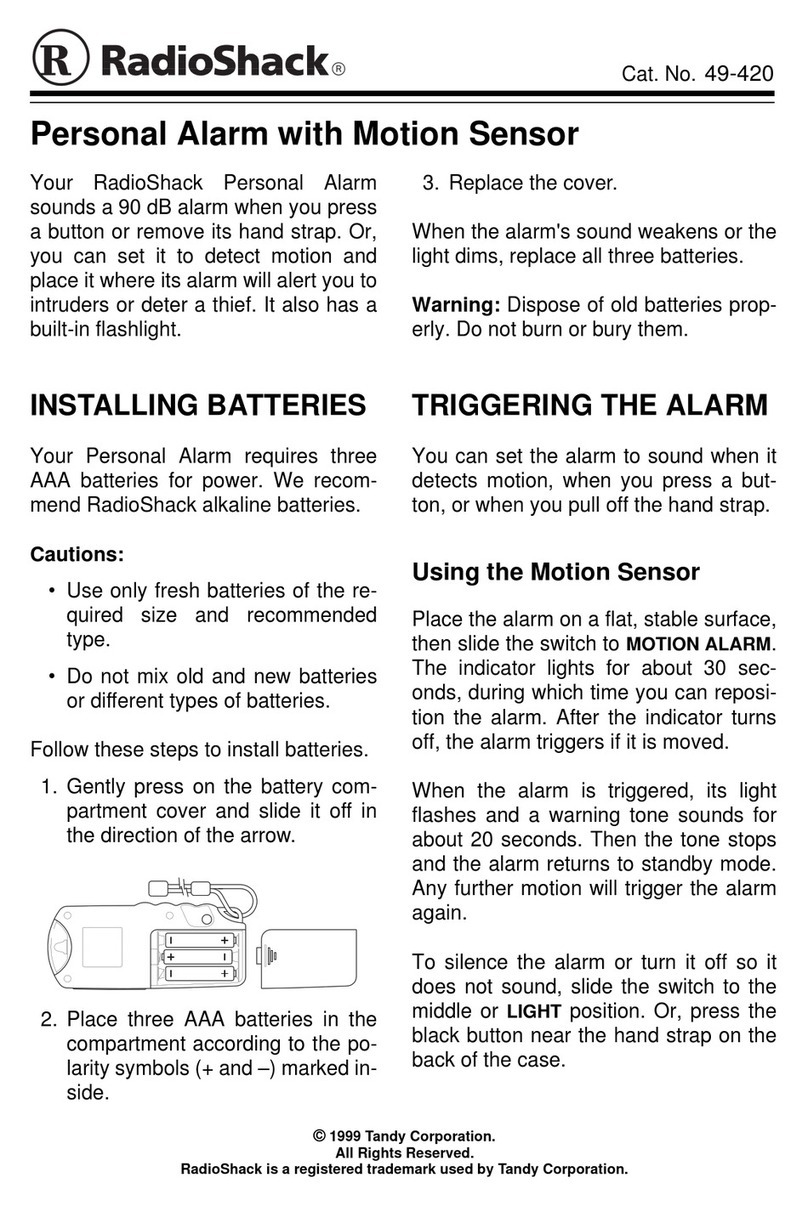
Radio Shack
Radio Shack 65572 quick start guide
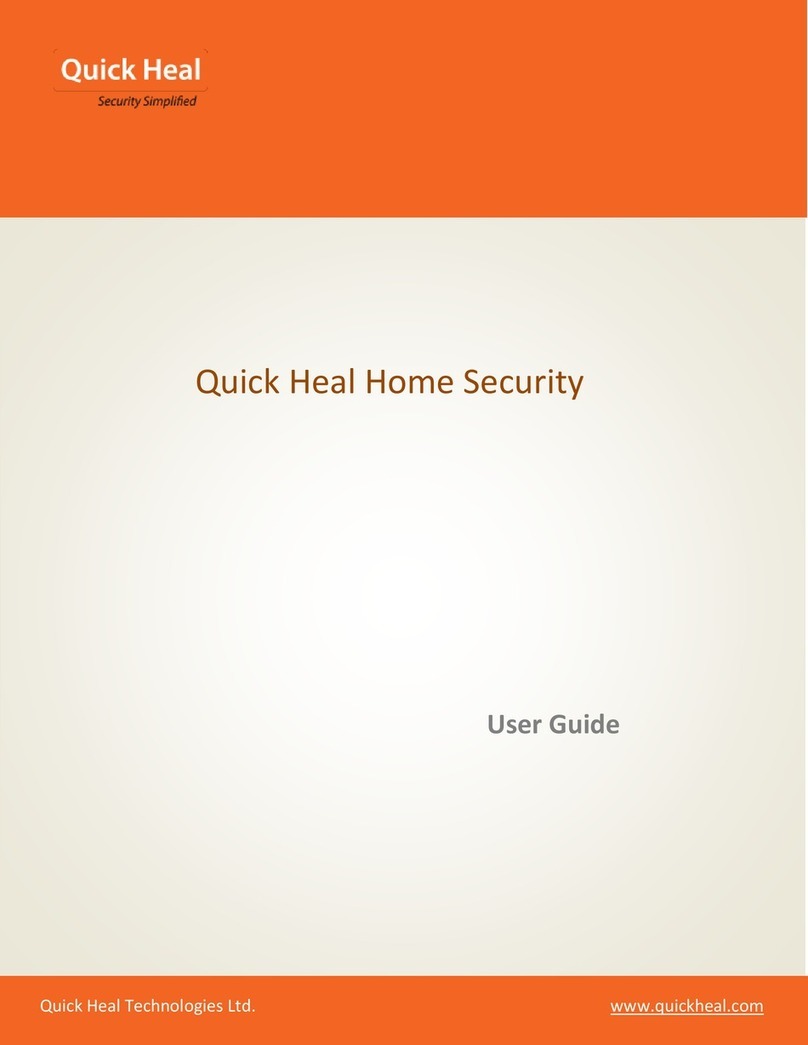
Quick Heal Technologies
Quick Heal Technologies HM1S user guide
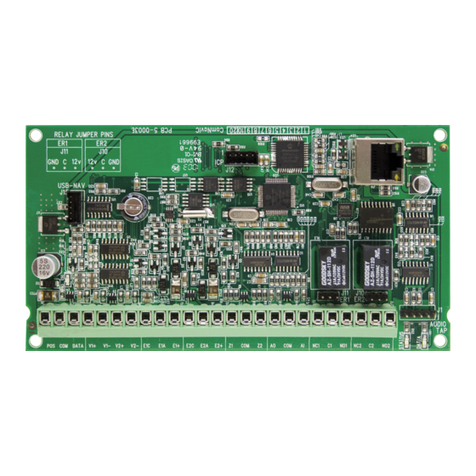
Interlogix
Interlogix NX-595E user manual
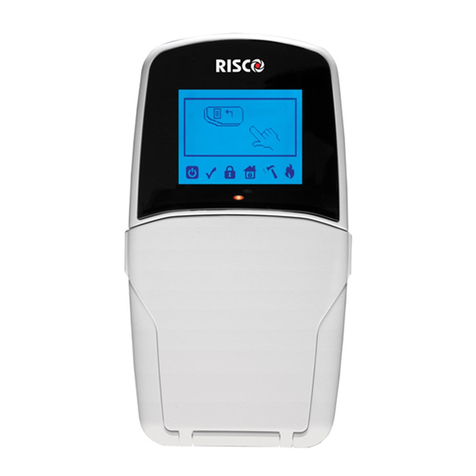
Risco
Risco LightSYS user manual

Siemens
Siemens FS20 Commissioning, Maintenance, Troubleshooting

Response
Response RE3000S Installation & operating handbook
